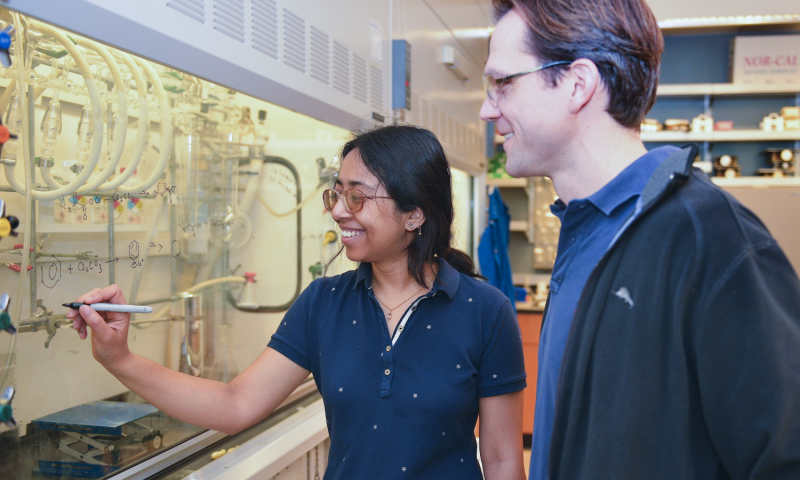
A way to make renewable plastic from carbon dioxide and plants figured out
Stanford chemistry graduate student Aanindeeta Banerjee and Assistant Professor Matthew Kanan with
co-workers
have discovered a novel way to make plastic from carbon dioxide (CO2) and inedible plant material, such as agricultural waste and grasses. The new technology could provide a low-carbon alternative to plastic bottles and other items currently made from petroleum.
“Our goal is to replace petroleum-derived products with plastic made from CO2,” said Matthew Kanan, an assistant professor of chemistry at Stanford. “If you could do that without using a lot of non-renewable energy, you could dramatically lower the carbon footprint of the plastics industry.”
Changing the plastic formula
Many plastic products today are made from a polymer called polyethylene terephthalate (PET), also known as polyester. Worldwide, about 50 million tons of PET are produced each year for items such as fabrics, electronics, recyclable beverage containers and personal-care products.
PET is made from two components, terephthalic acid and ethylene glycol, which are derived from refined petroleum and natural gas. Manufacturing PET produces significant amounts of CO2, a greenhouse gas that contributes to global warming.
The team focused on a promising alternative to PET called polyethylene furandicarboxylate (PEF). PEF is made from ethylene glycol and a compound called 2-5-Furandicarboxylic acid (FDCA).
“PEF is an attractive replacement for PET, because FDCA can be sourced from biomass instead of petroleum,” Kanan said.
The plastics industry has yet to find a low-cost way to manufacture PEF at scale. The bottleneck has been figuring out a commercially viable way to produce FDCA sustainably.
One approach is to convert fructose from corn syrup into FDCA. The Dutch firm, Avantium, has been developing that technology, but growing crops for industry requires lots of land, energy, fertilizer and water.
Turning plant waste into plastic
The Stanford team solved the problem using a far more benign compound: carbonate. Graduate student Aanindeeta Banerjee, lead author of the study, combined carbonate with CO2 and furoic acid, a derivative of furfural. She then heated the mixture to about 290 degrees Fahrenheit (200 degrees Celsius) to form a molten salt.
The results were dramatic. After five hours, 89 percent of the molten-salt mixture had been converted to FDCA. The next step, transforming FDCA into PEF plastic, is a straightforward process that has been worked out by other researchers, Kanan said.
Read more here
Pretty cool! If we’re going to eliminate our dependence on fossil fuels, we also need to find different ways of making products (such as plastics).


